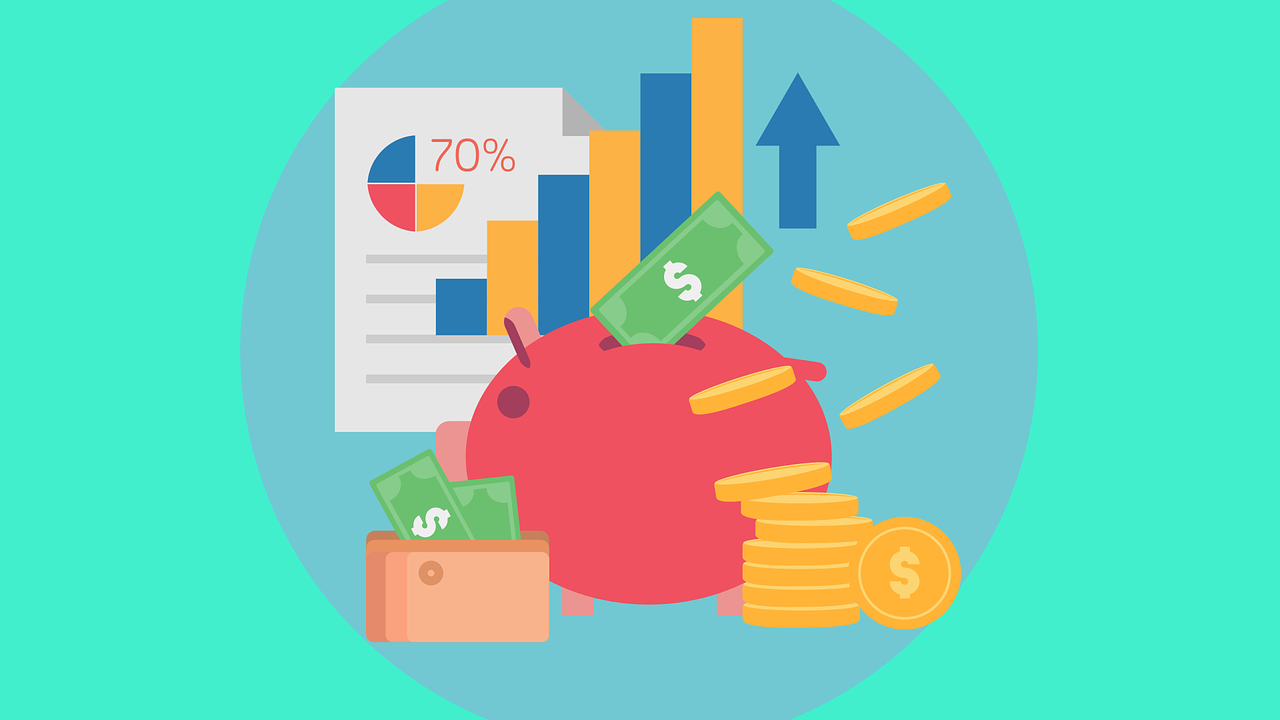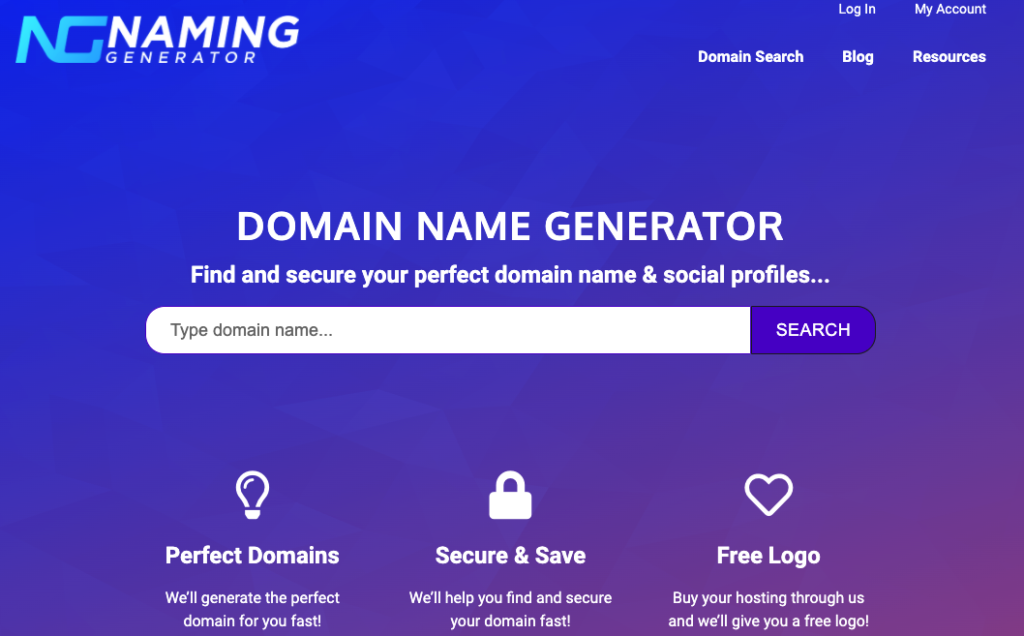On average, creating a basic website will set you back between $50 to $200 per month. But if you want a more affordable website startup cost, this article will teach you how to make a website quickly and without spending too much.
How to create a website for cheap? Creating an inexpensive website involves choosing a bundled package that gets you more for each dollar spent when registering your chosen domain, subscribing to a web hosting plan, installing WordPress, customizing your site with a free WordPress theme, and establishing a good branding identity. Below are the seven steps you need to follow to create a good website for cheap.
Step 1: Choose a Domain Name
A good business domain name should be memorable and brandable. You may use your business or company name as the domain name. Or, you may explore different word and phrase combinations first using our free domain name generator tool.
Using our domain name generator also allows you to search for the availability of your chosen domain as a username in various social media and membership sites. Feel free to experiment with different names before finalizing your domain. Always check whether the name matches the branding identity you want to create for your site.
Step 2: Register Your Domain
Once you are confident with a domain name, it is time to register it. Domain registration is needed to validate the website owner’s identity and to ensure that your site is linked to the right address on the internet.
Choose between affordable domain name registrars like BlueHost, NameCheap, and GoDaddy. These domain registrars often offer reduced annual plan rates compared to paying for the service at a higher monthly fee.
Upon registering your domain name, you will need to provide basic account information like name, address, and contact number. If you want to keep this information private, you may subscribe to domain name proxy service or domain privacy service.
Bonus Tip: You can save money on registering your domain name by getting one free with some of our hosting providers. Check them out here.
Step 3: Get a Web Hosting Plan
The next step is to get a web hosting plan. You need a web host to store all the data and files that are needed to run your website on a server. Most new websites do not need a ton of bandwidth or storage space, so go for a shared hosting plan for now. You may gradually upgrade your hosting plans once your site evolves.
As we have mentioned earlier, you can purchase web hosting plans that also offer free domains. Doing so allows you to save on the monthly domain registration fees.
Take advantage of this discounted pricing with any of our bundled web hosting options. Sign up for a NameCheap or Bluehost hosting plan, and you will get one free domain name on top of other benefits. Or, get WooCommerce hosting through SiteGround, and you will get free email services.
Explore all our web hosting options here. Also, qualify for $1,474 Dollars in FREE bonuses if you use one of our hosting options.
Step 4: Download WordPress
When you sign up for a web hosting plan, you need to decide if you want to build a website from scratch, use your web host’s website builder, or use WordPress. To save on time, effort, and money, we recommend downloading WordPress instead.
As a content management system, a self-hosted WordPress dashboard looks just like a regular WordPress.com blog. If you’re already familiar with the platform, using WordPress for your website will be a breeze. And if it’s your first time using WordPress, learn from hundreds of online tutorials on how to use its intuitive interface.
Remember, you may choose a regular shared web hosting plan and install WordPress yourself. Or, you may sign up for a WordPress hosting plan right away and do away with the hassle of installation.
To save more on your WordPress hosting monthly fees, take a look at our WordPress hosting solutions through WPX Hosting, WP Engine, and Kinsta.
Tip: If you purchased your domain from a different domain service provider, make sure to take point your domain to your web host.
Step 5: Select a Free WordPress Theme
By choosing a self-hosted WordPress site, access to the thousands of website themes on WordPress is at your fingertips. However, if you want your site to stand out, we suggest using the customizability options that the Astra WordPress Theme offers.
Astra is a customizable, responsive, and fast theme that will fit your new WordPress website. With it, you can change the layout, color, typography, headers, and a lot more.
With a free customizable WordPress theme, you not only deduct precious dollars on your website startup cost but also edit the theme’s design without much restriction.
Step 6: Set Up Website Branding
Having a clear brand identity is important for any business. More so, when starting a website. And nothing defines your website brand more than a well-designed logo.
To save up on the logo design cost, you may create your own logo using free online logo generators. Another cost-saving way to get a free customized and professional website logo is by signing up for any of our website hosting options. It’s a great deal considering you are already paying for monthly web hosting.
Step 7: Start an Email List
Upon setting up your domain name, web host, website design, and logo, you need to start thinking of how to grow your site. One way to do that cost-efficiently at the beginning is by creating an email list.
With an email list, you can directly inform anyone (with their permission, of course) of any posts, updates, or changes to your website. Most email marketing software like AWeber, MailChimp, and SendinBlue are available for free for the first 1000-2000 subscribers.
Take advantage of these offers while you are building your list. You can upgrade your email marketing plans later on as your site grows.
Our Web Hosting Bonus Bundle That Will Save You Money
Creating a website for cheap does not mean ending up with a subpar site. With our web hosting options, you get to decide which service suits you and your business best. And then reap additional benefits for free.
Our Bonus Bundle gives you up to $1,400 more value in the form of professional logo design, ebooks, six mini-courses, and a website traffic course – all for free.
You do not have to spend hundreds or thousands of dollars unnecessarily when creating a website. You also do not need all the bells and whistles of customized design and other functionalities of a business website from the get-go.
In the beginning, you just need a website that you can afford, with a willingness to learn and improve along the way.
Related Questions
What Is the Cheapest and Easiest Website Builder?
The cheapest website builder is WordPress. It is also the most commonly used content management system in the world today. It’s relatively easy to learn by watching a few tutorial videos or trying out the free WordPress.org blogs. WordPress hosting costs about $3 per month.
What Is the Cheapest eCommerce Website Builder?
The cheapest eCommerce website builder is Square Online. With Square Online, you can start an online store for free and with no monthly fees. They do charge a 2.9% + ¢3 transaction fee. Other eCommerce website builders may not charge transaction fees, but they make up for it through monthly fees and a decreased number of products.
Is WordPress Really Free?
Yes, WordPress is free. You can download the WordPress software for free. However, to use this content management system on the web, you need to have a web hosting account. In your web hosting account, install WordPress, and you can begin customizing themes, adding plugins, posting content, and tracking your traffic.
What Is the Difference Between WordPress.com and WordPress.org?
The main difference between WordPress.com and WordPress.org is their web host. WordPress.com is owned and hosted by WordPress, the company. When you sign up for WordPress.com, you will get a free WordPress.com subdomain. On the other hand, WordPress.org allows you to download the WordPress software and lets you install or host it on your web host. With a self-hosted WordPress account, you can use your own domain name.


